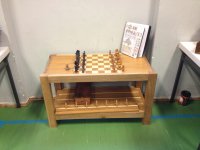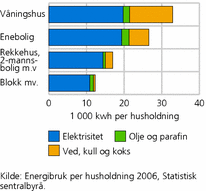shed9
Member
- Joined
- Mar 22, 2014
- Messages
- 497
Sjur said:Are your barrels in metal? Have you experienced any wearout on the barrel as a result from the dust?
My barrel is metal but to be honest plastic would be better. It certainly doesn't need to be metal and the only reason I went that route was it was easier to mate the large blast gate at the base. If I made another I would go the plastic route as it's lighter and easier to cut. That one you posted would be ideal.
Sjur said:On another note, I like the reflecting material you have in the ceiling!
The material is insulating material from an air con install a few years back. I've got rock wool in the ceiling void and just layered this stuff as a temporary measure to keep the heat in with the intention of installing further boarding. I can't see me changing though it as it is incredibly effective in keeping the place warm and reflecting light, also if I get any tears or problems I can fix it up seamlessly with silver duct tape. I've heavily insulated where I can and this makes a huge difference in terms of heat retention, cooling and noise reduction.
You should probably consider noise pollution in regards to your neighbours if they are in close proximity. If you have to retrospectively install sound insulation it could be a small nightmare. I'm quite fortunate in that the houses (all eight of them) in my village are quite far apart but you would be surprised how far sound travels. Also when people get irritated by noise, they tend to listen for it more and pick up everything - if you know what I mean. There are ways of controlling some noise that doesn't require total room isolation such as just sound insulating the extraction system, types of cutters / blades, etc.
I also think that wrightwoodwork makes a valid point in viewing your process in terms of workflow - sounds obvious but I've seen so many people regret machine layout when its too late to change (especially with fixed ducting and electrical outlets).
The only other advice I would give would be to have some accessible drawers or covered storage somewhere with no particular designated use, probably under your workbench. Do not assign them any use other than as temporary storage and try to discipline yourself to use this to store the crap and detritus that would usually be piled on your workbench before being moved to on top of your combination machine before being moved yet again to another top surface. You know the stuff I mean, the small hand tools, offcuts, pieces of paper, bits you can't be bothered to put away just yet, else you will be forever moving it around for the rest of your natural life. Give yourself a timeslot to clear out that storage area, perhaps every couple of days or once a week. It works for me and keeps you clutter free.



